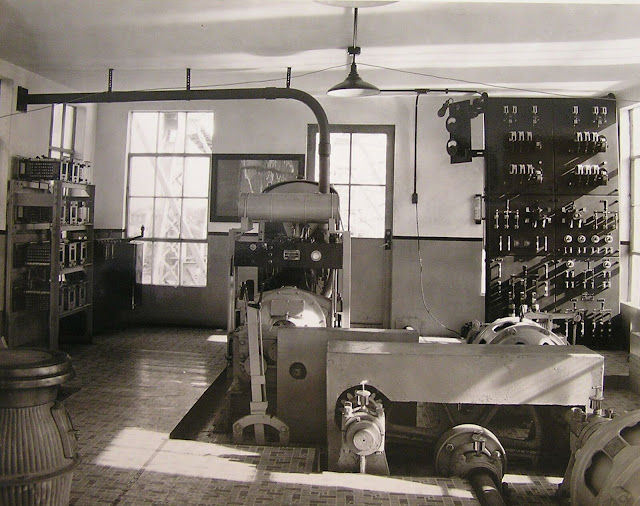Of the nine truss spans, five of them are over flood plains.
 |
| Bred Davidson posted, cropped, May 3, 2022 The Florence IL. Bridge |
 |
| Kevin Stewart, Jul 2019 Single photo enhanced with easyHDR 3.14: Illinois River Bridge. |
 |
| Jim Pisell posted Florence Bridge. Mike Yerion: Per my engineering school buddy, who worked bridges for IDoT, there were four of these type of bridges built over the Illinois. I grew up in the area. When I was a kid, mom and I would come here and get fish from the fish markets. I played and fished on MM 50, Montezuma Landing. As an adult, I did night patrols from Grafton to Meredosia doing Aids to Navigation inspections. Love this area and river. Richard Telford: Mike Yerion Hi Mike! The lift bridges on the Illinois River were Joe Page at Hardin, the Florence bridge, the Pekin Lift bridge which has been gone for years, and the Shippingsport bridge at LaSalle which also has been gone for many years. I inspected the Joe Page, the Florence and Shippingsport Bridges. My favorite one was the Joe Page because I thought it was in a scenic area. The lift span house was a unique place. |
 |
| Steve Stout commented on Jim's post |
 |
| Robin Kaye Lomelino posted Illinois River, Florence bridge! Florence Illinois, 08/01/25 Ronald R. Turner: Prior to the building of Interstate 72, U.S. Rt. 36 crossed the Illinois River on this bridge. Prior to 1972, U.S. Rt. 54 also was on this bridge. Sometime in the next few years, this bridge will be replaced with a new bridge that will be high enough over the river that a drawspan will not be needed. |
 |
| 1930 photo by Art Kistler from IDOT via BridgeHunter (HistoricBridges also has this photo.) |
 |
| Street View |
It is good to see that Illinois is doing at least some maintenance on a truss bridge.
 |
| Street View, Oct 2016 |
But maintenance expenditures will be stranded assets. IDOT completed a 3-year environmental impact study and plans on replacing this bridge with a UCEB (Ugly Concrete Eyesore Bridge) 300' south of this bridge in their FY21-26 funding cycle. IDOT says it will look similar to the Champ Clark Bridge. The Clark Bridge is just two lanes, but it does have wide shoulders. It will not only be high enough that it doesn't need a moveable span, it will be designed to more effectively avoid flooding. [wlds]
 |
| IDOT via roadtraffic-technology |
 |
| FlorenceBridgeStudy |
Florence is not much more than a grain elevator. There is a stone quarry just a little north of this road.
 |
| Satellite |
Ed & Woodie's Tap is now permanently closed. This is another reminder that 2019 was a very wet year in the heart of the USA. However, it does appear to have opened again as the Riverbank. If the water was this far inland, it must have been real close to the bottom of the trusses.
 |
| Kiersten Herron, May 2019 |
And the flood plain extends beyond the truss spans that were built over land.
 |
| Apr 2013 photo by Jeremy Ruble via BridgeHunter |
Taking another look at a satellite image, the above view is of the east side and the hill in the foreground is a levee.
 |
| Satellite |
"The Florence bridge was refurbished in 1981, and refurbished again in 2004. In the 2004 project, the deck was replaced, the bridge was sandblasted and painted, the lift cables were replaced, a new operators house was built, and electrical work was performed. Update—the Florence Bridge was closed on June 28, 2012, when a routine inspection revealed a structural issue at the top of one of the lift towers. This caused one set of large pulleys at the top of the bridge to shift laterally. If the bridge were to remain in operation, additional damage would occur that would be much more difficult to repair. The bridge is expected to be closed at least 9 months while a repair strategy is developed. In the mean time, the lift span has been left in the open position to allow river navigation traffic to pass under the structure." [JohnWeeksIII] According to comments in BridgeHunter, the bridge was closed again in 2016 and 2019 because of allisions by barges.
Judy Goby Oxtoby posted three photos with the comment: "Joy riding on IL Rt 106…crossing the Illinois River on a wonderful old draw bridge."
Ronald R. Turner: The drawbridge at Florence, Illinois. Today, it is Illinois Routes 100 and 106 that cross the Illinois River on this bridge. Prior to the completion of what is now Interstate 72, this bridge carried U.S. Route 36 and Illinois Route 100 across the Illinois River. Back then, Illinois Route 106 ended at Winchester, Ilinois, where it intersected with U. S. 36.
A new bridge is supposed to be built at this location in a couple of years. Once that bridge is completed, this bridge will be removed.
Norman Schafer shared
 |
| 1 |
 |
| 2 |
 |
| 3 |
 |
| Lisa Ruble commented on Judy's post [Lisa provided a ton of photos of this bridge and of some other bridge in the comments. She also posted photos of her "bucket list" bridges.] |
 |
| IDOT [Illinois is claiming that construction will begin in 2024, yet a comment says they have yet to buy any land.] |
 |
| 2:36 video |












.jpg)


















